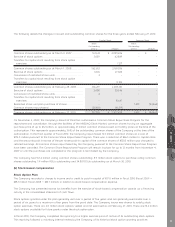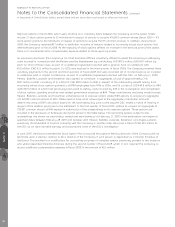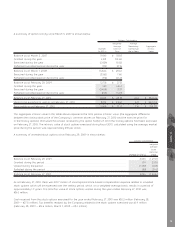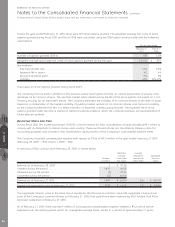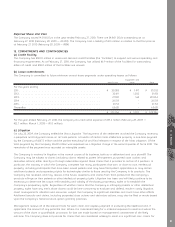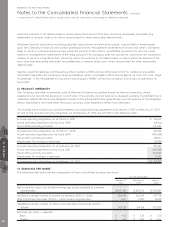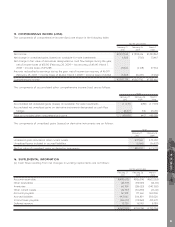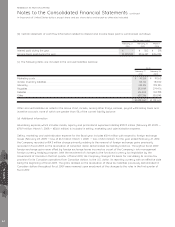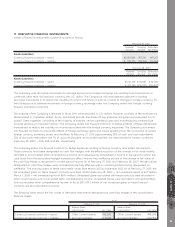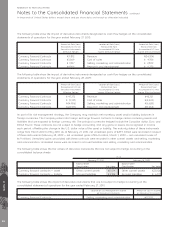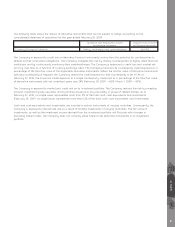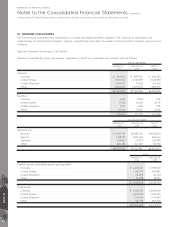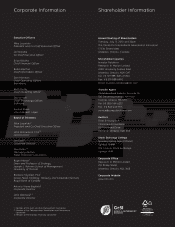Blackberry 2010 Annual Report Download - page 95
Download and view the complete annual report
Please find page 95 of the 2010 Blackberry annual report below. You can navigate through the pages in the report by either clicking on the pages listed below, or by using the keyword search tool below to find specific information within the annual report.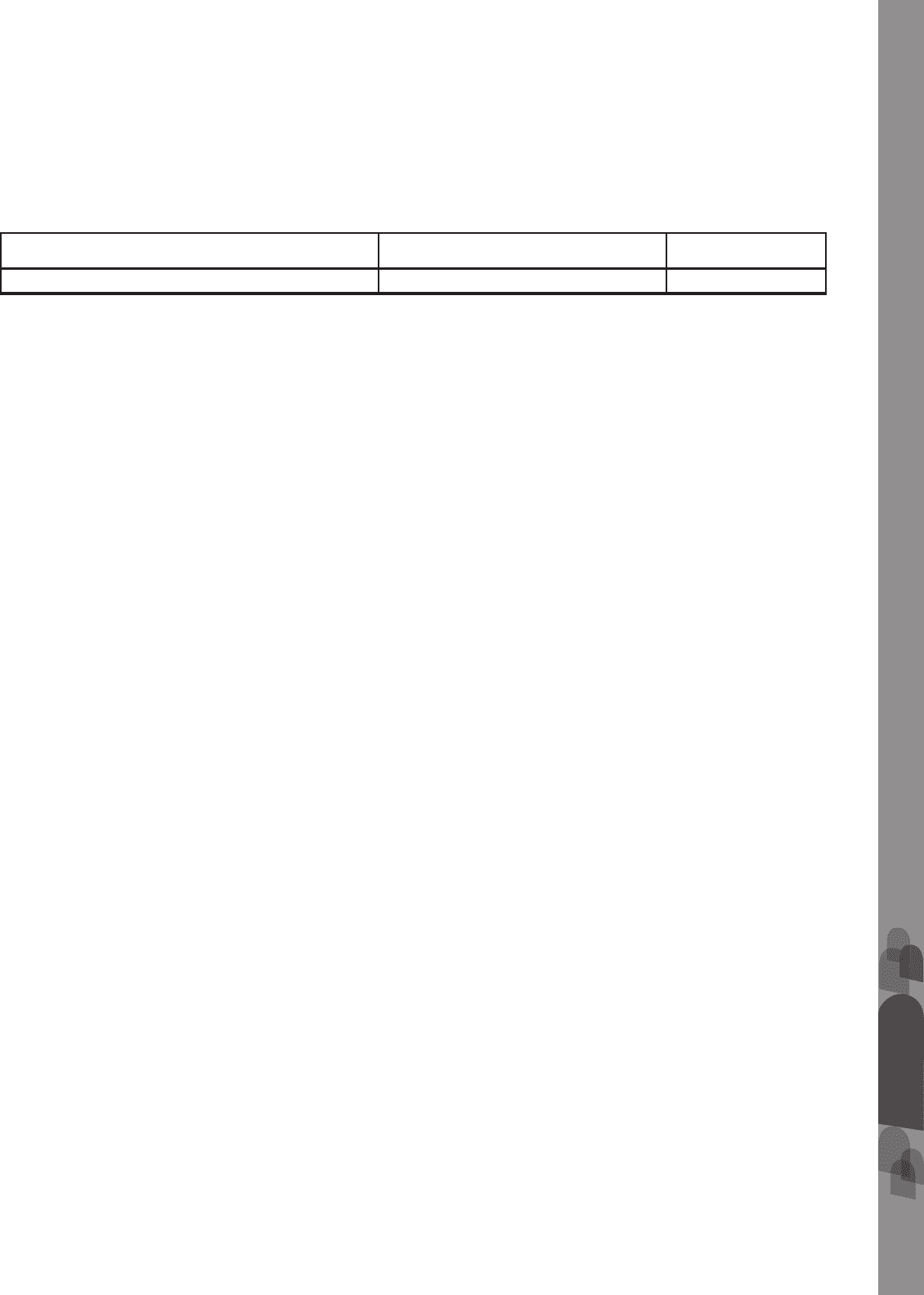
The following table shows the impact of derivative instruments that are not subject to hedge accounting on the
consolidated statement of operations for the year ended February 28, 2009:
Location of Gain Recognized in Income
on Derivative Instruments
Amount of Gain in Income
on Derivative Instruments
Currency Forward Contracts Selling, marketing and administration $24,782
The Company is exposed to credit risk on derivative financial instruments arising from the potential for counterparties to
default on their contractual obligations. The Company mitigates this risk by limiting counterparties to highly rated financial
institutions and by continuously monitoring their creditworthiness. The Company’s exposure to credit loss and market risk
will vary over time as a function of currency exchange rates. The Company measures its counterparty credit exposure as a
percentage of the total fair value of the applicable derivative instruments. Where the net fair value of derivative instruments
with any counterparty is negative, the Company deems the credit exposure to that counterparty to be nil. As at
February 27, 2010, the maximum credit exposure to a single counterparty, measured as a percentage of the total fair value
of derivative instruments with net unrealized gains was 24% (February 28, 2009 — 60%; March 1, 2008 — 40%).
The Company is exposed to market and credit risk on its investment portfolio. The Company reduces this risk by investing
in liquid, investment grade securities and by limiting exposure to any one entity or group of related entities. As at
February 27, 2010, no single issuer represented more than 8% of the total cash, cash equivalents and investments
(February 28, 2009, no single issuer represented more than 12% of the total cash, cash equivalents and investments).
Cash and cash equivalents and investments are invested in certain instruments of varying maturities. Consequently, the
Company is exposed to interest rate risk as a result of holding investments of varying maturities. The fair value of
investments, as well as the investment income derived from the investment portfolio, will fluctuate with changes in
prevailing interest rates. The Company does not currently utilize interest rate derivative instruments in its investment
portfolio.
NOTE 17
87


